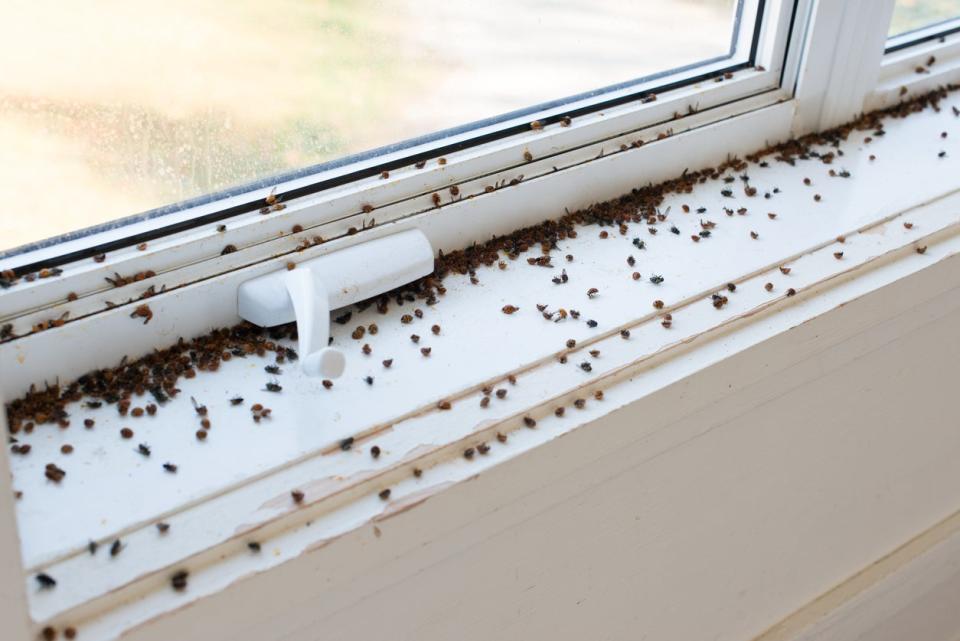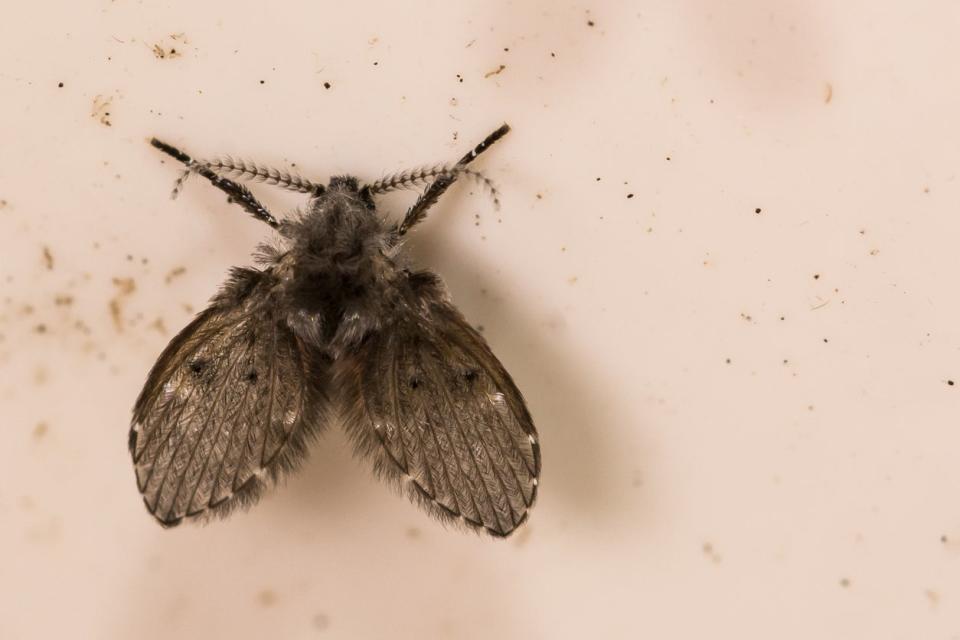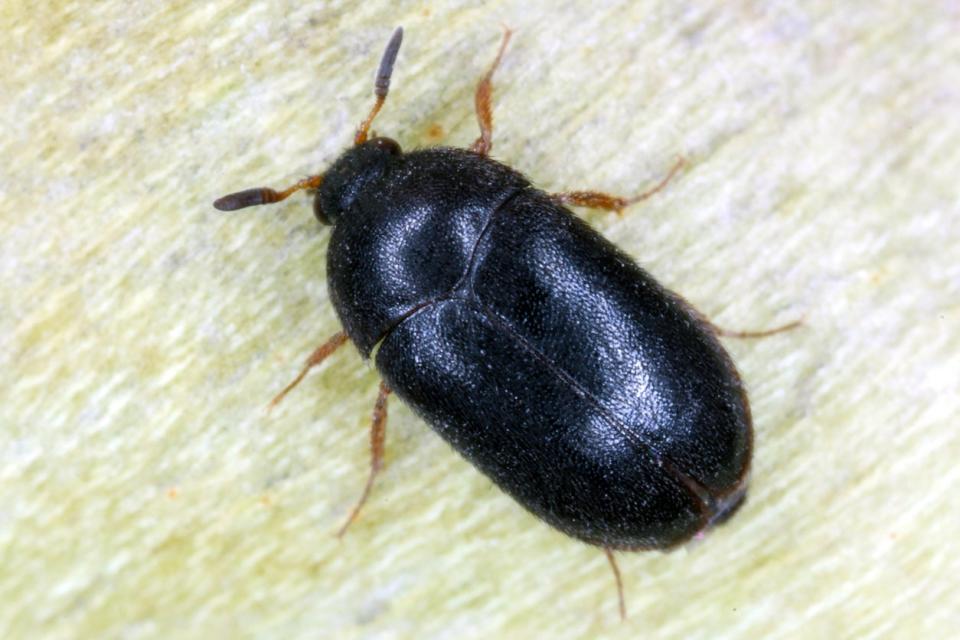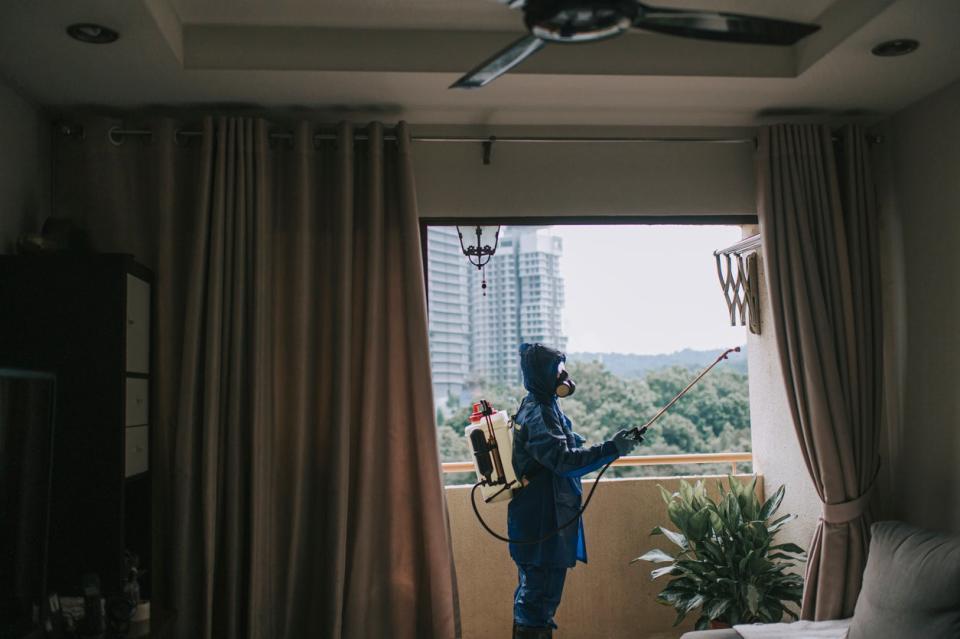Solved! What Are the Tiny Black Bugs in My House Near the Window?

Q: We have been opening the windows in our home a lot more, and that’s how I recently noticed tiny black bugs in my house near the window. What are these small black bugs, where did they come from, and how do I get rid of them?
A: Generally, finding bugs in the home is an unwelcome experience. As seasons change, homeowners often encounter various insects while indoors, such as tiny black bugs in the house near windows and other points of entry. These critters might be a harmless type of bug, such as an ant or a carpet beetle, or they may be a type of insect that requires more urgent attention.
Learning what those tiny bugs in the house are, what is drawing them to the home, and where they’re entering from can help you get rid of them faster. There are various reliable ways to protect a home from insects and ways to stop an infestation before it starts.
Ants may have wandered into your home from your yard.
There are different kinds of ants, including carpenter ants that target wood structures, aggressive fire ants that are red in color and can hurt humans with a venomous sting, and little black ants that are often found in large colonies nesting in lawns or cracks in cement.
Ants can easily make their way inside through the tiniest of cracks and crevices, like those found in windows, walls, or home foundations. To get rid of these small bugs in the house, homeowners or renters will want to start by looking for and sealing any points of entry, then cleaning the surrounding areas. Because ants leave behind an invisible trail for other ants to follow, using soap and water to clean the trail can prevent future infestations.
Once the area is sealed and the trails are cleaned, residents will want to set up a liquid baiting system to first target the worker ants, then larvae and the queen ant. The worker ants will create a new trail to the bait which other ants will follow. The bait will be brought back to the colony, targeting the thousands of ants homeowners don’t see during an infestation.
Find trusted local pros for any home project

+

Drain flies, also called moth flies, typically live around areas where water accumulates—like the drain, as their name suggests. But when the adult population reaches a certain size, individuals tend to congregate near windows.
Drain flies are often light gray or tan with light-colored wings, but may look like tiny black bugs. They have a fuzzy appearance and measure about 1½ to 5 millimeters long. These bugs feed on dying organic material, which is why they can be found near drains, decaying logs, or compost piles. Although drain flies have a lifespan of only a few weeks, new adults can replace them quickly. If their population in a home becomes too big, drain flies may congregate near windows, according to The Ohio State University.
If a homeowner or renter finds these common small brown bugs in the house, it may be a sign that there is a slow or clogged drain, especially if the resident spots them in the kitchen or in a bathroom. Regular cleaning and maintenance are key to making sure drain flies don’t become an issue inside the home.

Photo: istock.com
If the tiny black bugs have wings, they’re probably gnats.
Little black bugs in the house can be many different insects, including gnats. As full-grown adults, gnats are tiny, long-legged, winged insects often seen flying in masses, which are referred to as ghosts. Ghosts tend to swarm around dusk and can be found in open spaces such as a large field or above a street. Depending on their species, some gnats feed on crop pests, while others are crop pests. Some bite and feed on plants, insects, and blood, while others are non-biting.
Alternatively, the bugs may be phorid humpbacked flies. These flies, which look similar to fruit flies and gnats, can be black, yellowish, or dull brown in color. These small, tiny brown bugs in the house feed on decomposing material, such as ripening fruit on the counter or moist organic material found in drains.
To remove these flies, residents will want to make sure drains are cleaned and free of any clogs. If not taken care of, an infestation can occur, requiring costly pipe repairs and potentially floor removal.
Clover mites or carpet beetles may be annoying, but they’re not dangerous.
Clover mites may look black at a distance, but they’re actually red. They are impressive little bugs whose females can produce up to 70 eggs at a time, all without a male. When crushed, clover mites will leave a red stain behind, which can cause an issue when found indoors. However, they are not damaging to a home or harmful to humans. These small, tiny bugs in the house are particularly attracted to moisture; therefore, spotting these pests can be indicative of a larger issue—likely related to moisture—in the home.
"Dusty
"Maybe

+

"}" data-sheets-userformat="{"2":769,"3":{"1":0},"11":3,"12":0}">
Tiny black bugs in your house?
Maybe it's time to call a pest control expert. Get free, no-commitment project estimates from top-rated services near you.

+

Homeowners may also identify little tiny black bugs in the house or bedroom as carpet beetles, which can lay over 100 eggs at one time. While they aren’t dangerous to humans, these black, white, and orange- or yellow-striped oval bugs have the potential to cause damage to a homeowner’s belongings like clothes, rugs, and furniture if an infestation goes unnoticed. While the adult beetles feed on pollen and plants, both the young beetles and larvae will feed on silk, wool, leather, pet hair, and other natural fibers.

Photo: istock.com
Keeping your windows clean and applying perimeter treatments can help control pests.
To keep pests at bay, homeowners and renters will want to take preventive measures. By maintaining windows and keeping them clean, it’s easier for a resident to detect any gaps that insects may be using to enter. It's advised to use caulk to seal holes, such as those near the window, and repair rips in window screens.
In addition, residents can use perimeter treatments to protect the home from unwanted visitors by spraying around the foundation, near any cracks or entry points, and around doors and baseboards. They can also create a poor living environment for bugs by keeping food in airtight containers, eliminating excess moisture, and ensuring weatherstripping around the home is in good condition. It's important for residents to remember that these solutions will only work temporarily; they will need to reapply the sealer or invest in stronger solutions to see long-term benefits.
Homeowners who are still finding tiny black bugs in the house, even with precautions, may consider replacing their windows with newer, better-insulated ones. Issues within the home left unaddressed can get worse over time, leading to more serious infestations—such as termites—that require expensive measures to rectify.

Photo: istock.com
If tiny black bugs get out of control, contact a pest control professional ASAP.
Should the tiny black bugs become a bigger problem, it may be time for the resident to call a professional. A pest control professional can help get rid of the small black bugs in the house and address any underlying issues that may be causing the infestation. They can help detect bug entry points and seal up areas of the home that may be inviting unwelcome critters.
Pest control professionals have access to powerful equipment designed to handle large-scale infestations. With their advanced training and knowledge, pest professionals often wind up costing far less than what a homeowner or renter might spend on failed DIY attempts.
When hiring pest professionals, residents will want to ensure they have a solid understanding of the problem, hold the proper certifications and insurance, and offer a guarantee. Residents can also seek recommendations from family members and friends and check out reviews online to find a company that can provide services nearby. To find the right pest control company for the job, homeowners and renters will want to look into the best pest control companies like Terminix or Orkin.

 money
money 